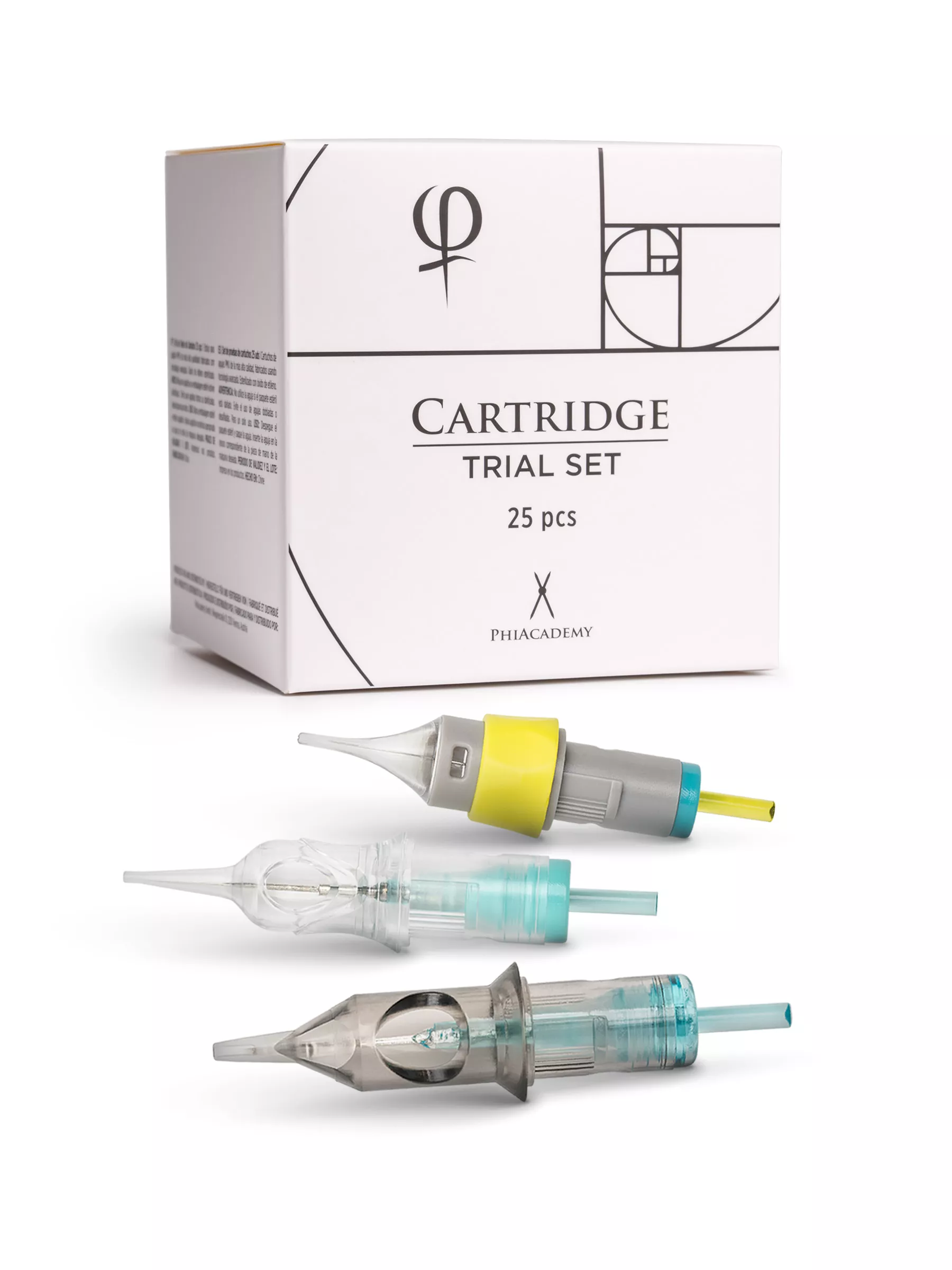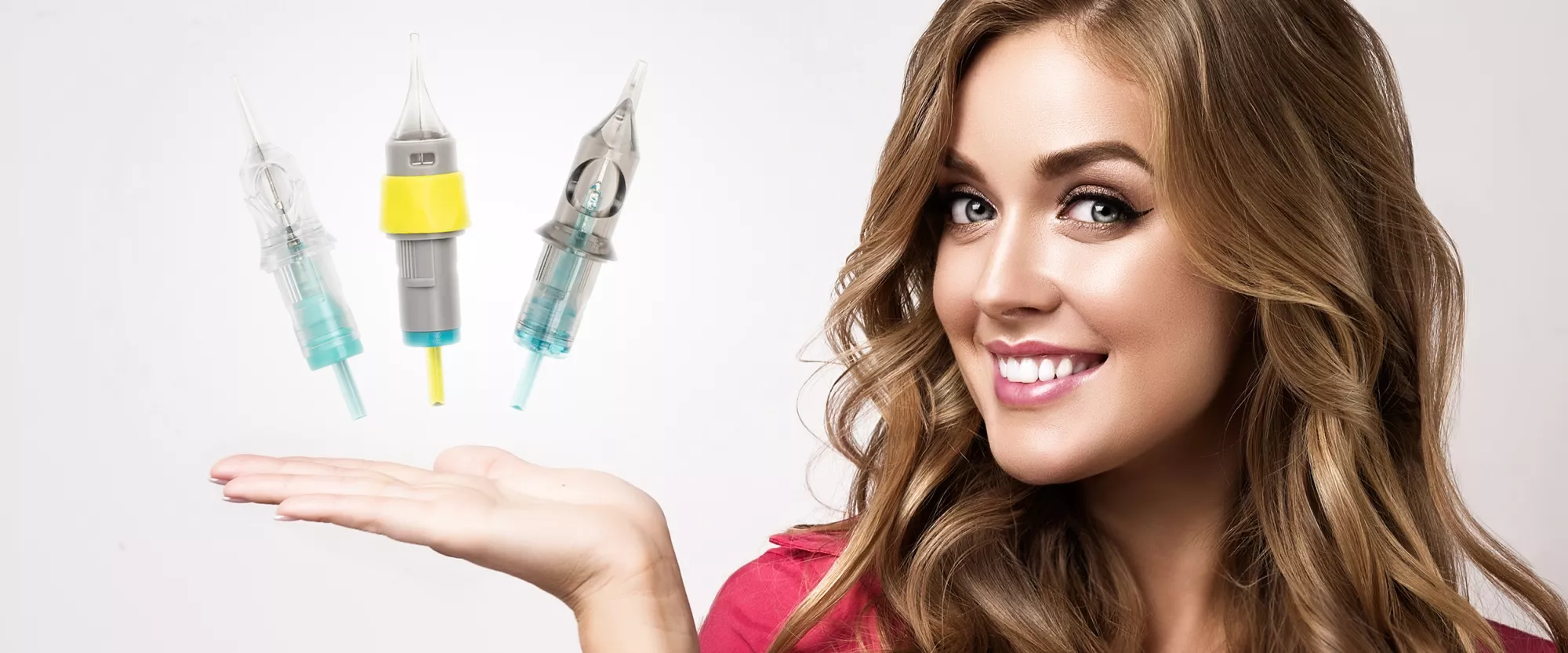
PhiContour Cartridge Configurations Explained
Once you decide to become a member of the PMU community, there is one important thing to keep in mind – there is no limit to your creativity.
However, to truly be able to access your full potential as an artist, you first need to build a foundation of technical skills and knowledge needed for top performance in every step of your career. Mastering needle theory is a big part of that!
In this guide, we take a closer look at Phi cartridges and explain the most important factors to consider when choosing the best PMU needles for your machine.
What Are PMU Cartridges?
A needle cartridge is a disposable part of a PMU machine, needed to implement pigment into the skin.
Each needle cartridge comes with a specific set of properties that meets the artist's needs in a way that is first and foremost compatible with the chosen PMU machine.
To identify the optimal PMU needle cartridge for a particular device, the artist must consider its intended purpose, specifically, the treatment or treatments it is meant to be used for.
Another important factor to consider when choosing PMU cartridges is the client's skin type.
What Are the Most Important Characteristics of PMU Cartridges?
When choosing the perfect Phi cartridge for your PMU treatments, there are several important factors to consider.
1. Needle Position

A decentralized needle is a unique feature of Phi cartridges, meaning the needle itself is more flexible and is best used when working with slower speeds and in slower hand movements.
Minimizing the number of punctures without pigment is crucial to minimizing skin damage. The fewer pokes made to deliver the desired results, the less trauma the skin will go through, so any supplies that diminish this are definitely worth trying.
2. Diameter
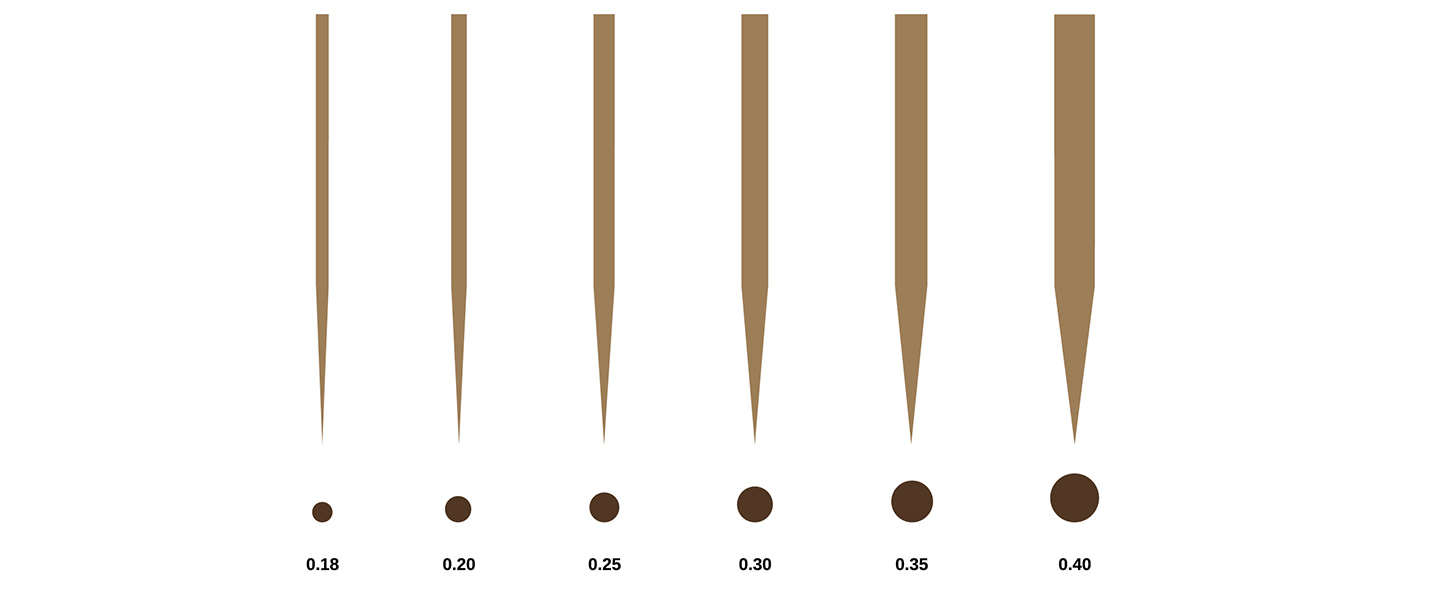
The most commonly used needle diameters in the PMU industry are 0.18/ 0.20/ 0.25mm, referring to needles that are very thin and flexible. These sizes are only recommended for experienced artists, to achieve precise details.
Needle diameters that are over 0.25/ 0.30/ 0.35mm are meant for use on all skin types and are a universal size meant for use in all PMU techniques. They help diminish skin trauma, so they’re better for newer artists.
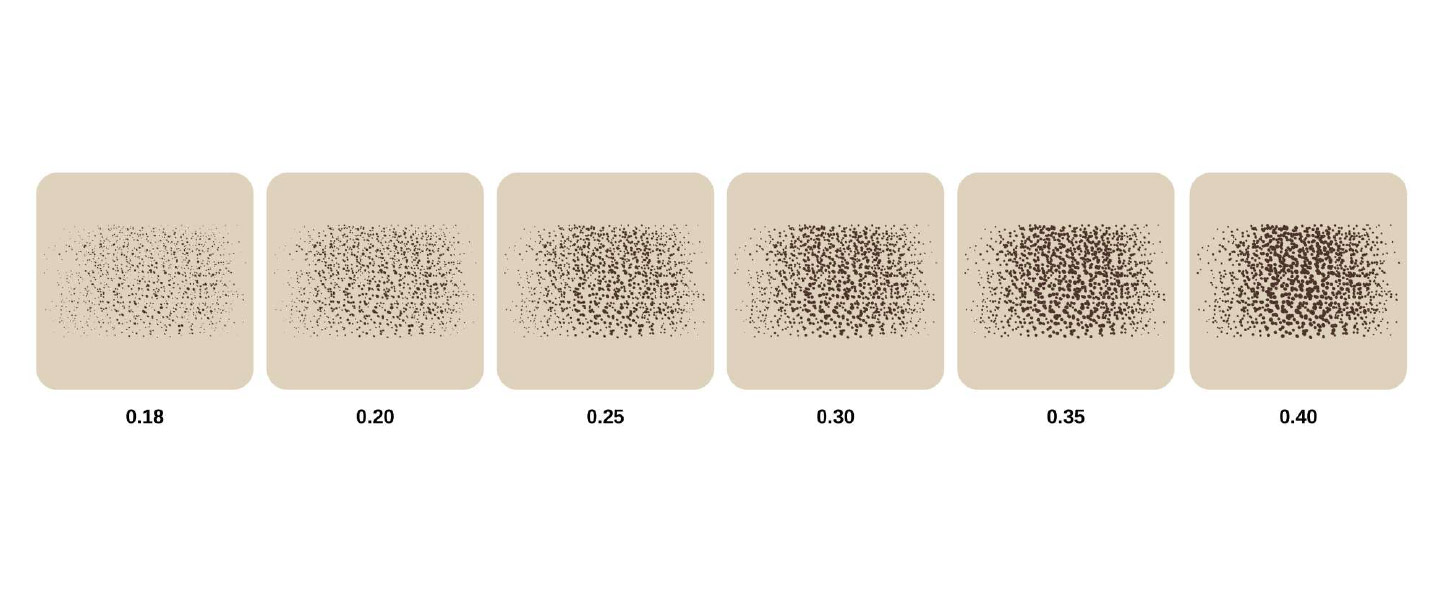
3. Taper
When choosing between tapers, the most important thing to take into consideration is the client's skin sensitivity and skin type.
Let’s take a look at the differences between various taper lengths:
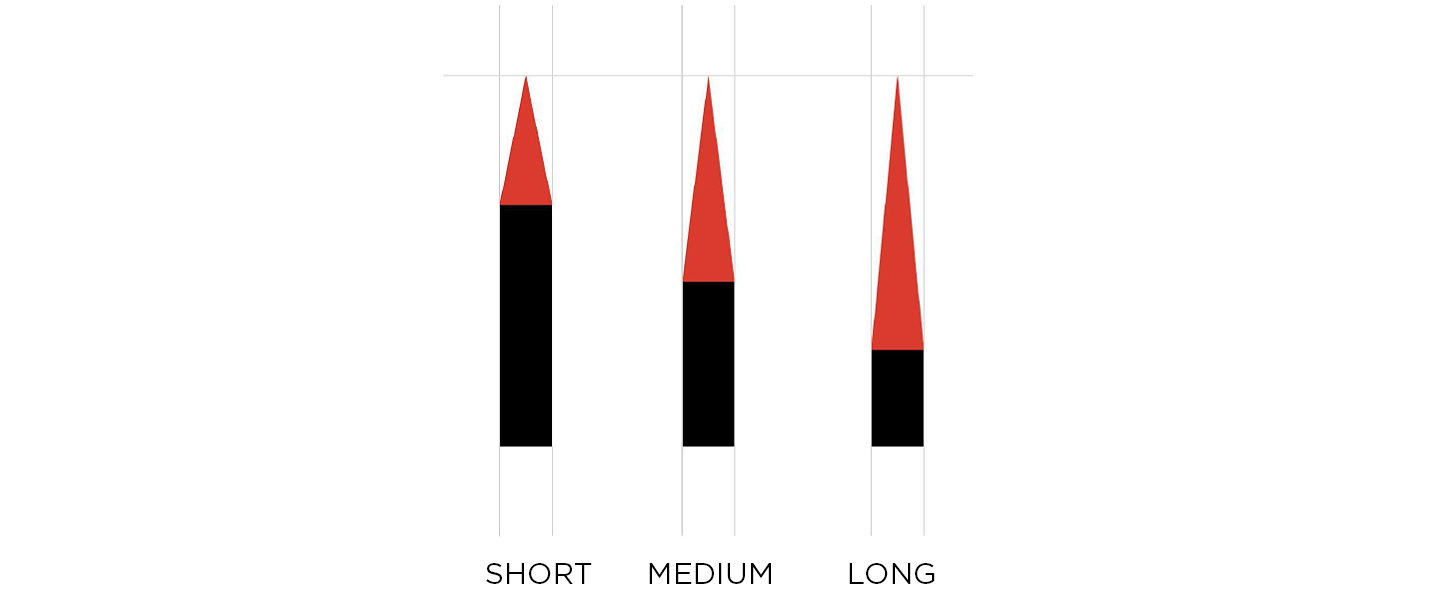
Short Taper
Medium Taper
Long Taper
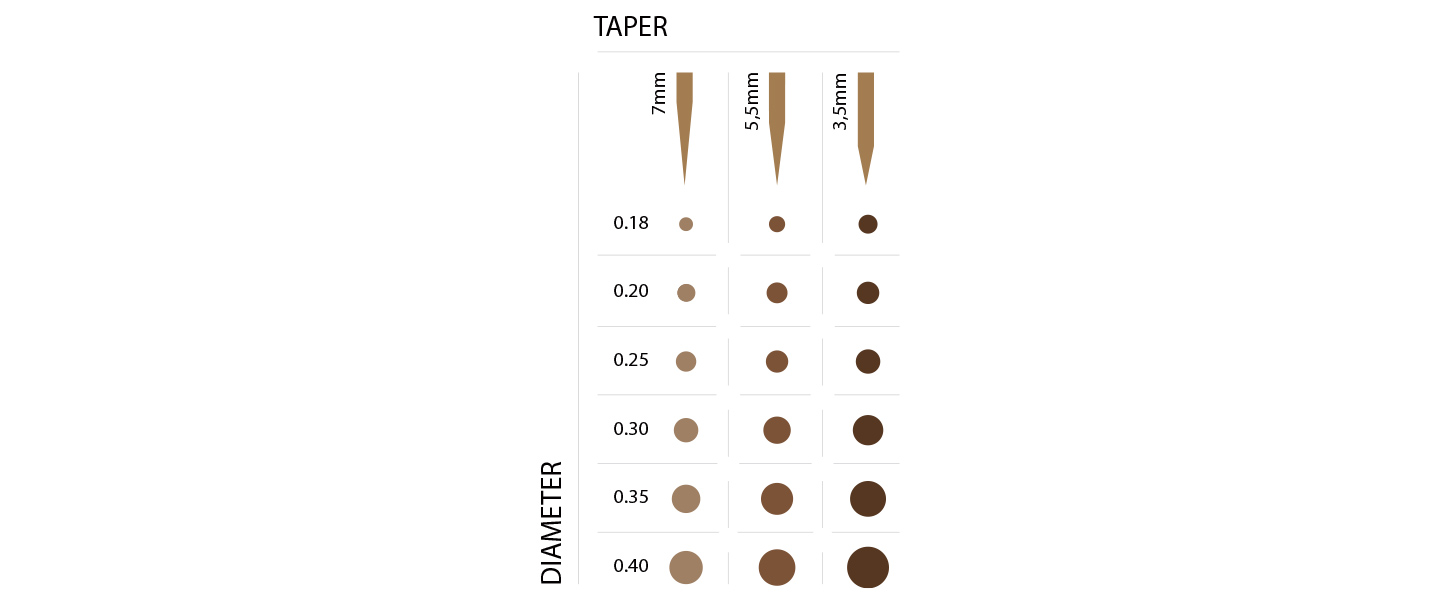
4. Elasticity
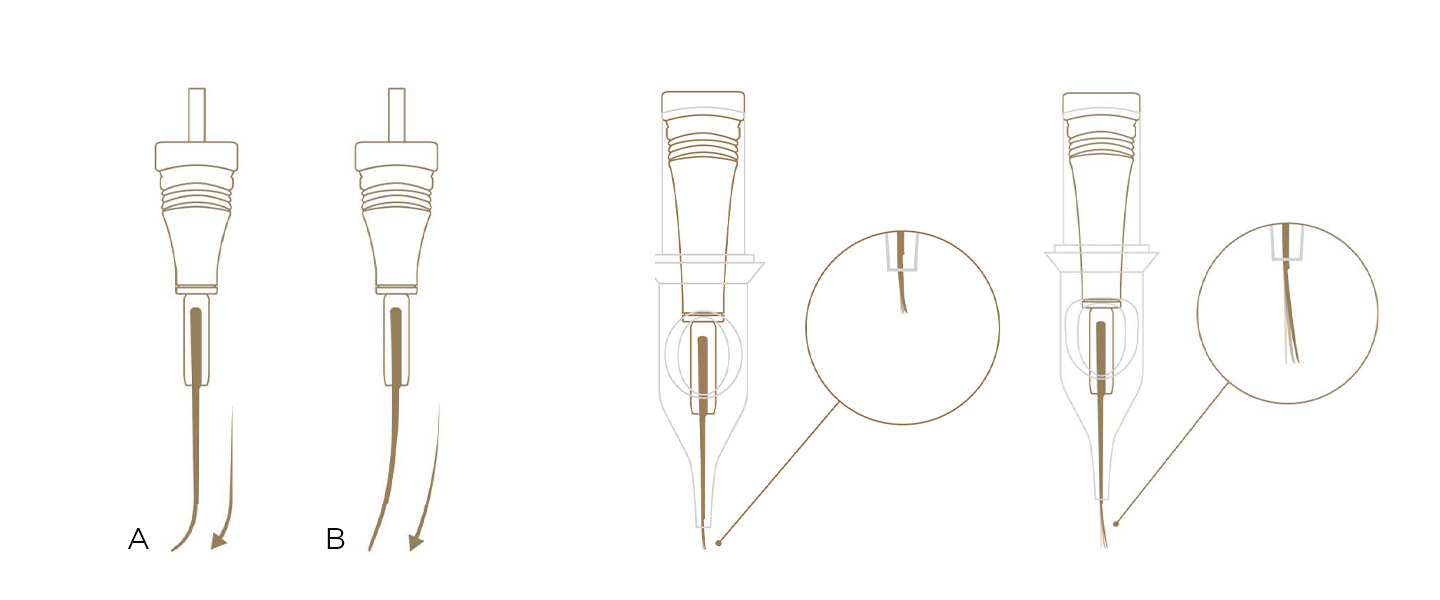
Needle elasticity increases with more needle exposure.
5. Single Needle Length
Single needle length is the measurement of the tip of the main needle alone. The shorter the single needle length, the less elasticity there will be.
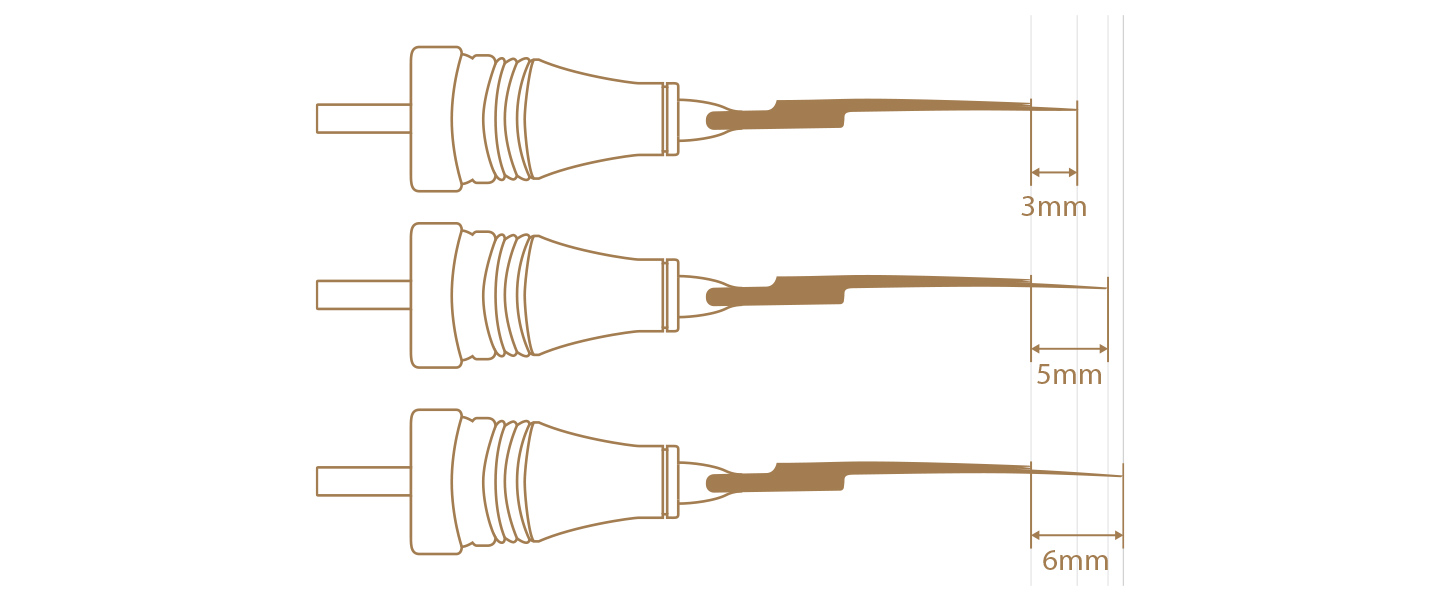
6. Silicone Barrier
However, with PMU silicone barriers, this is not the case. PMU silicone barriers are often much softer to allow the machine to work without disruption, even when set to slower speeds, but are still hard enough to stabilize the needle.
7. Grip
Cartridge options without a featured grip are recommended for artists who hold their machine higher on the body.
8. Needle Configuration
The standard PMU needle configurations are:
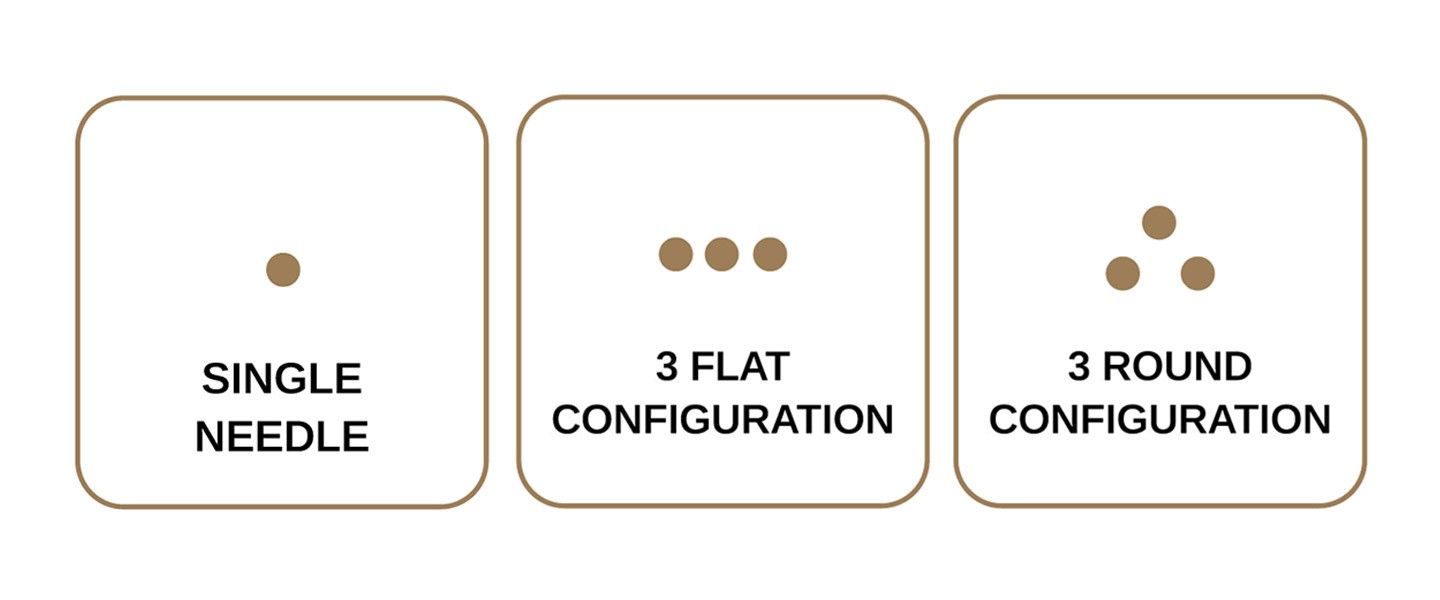
Single Needle Configurations
Multiple-Needle Configurations
- Round needles are grouped in a circular arrangement. They can be round shaders or round liners. Liners are grouped more tightly together, while the shaders are grouped more loosely.
- Flat needles are grouped to form a straight line. Flat needles can be grouped according to their tip into a flat or curved configuration.
- They can also be divided according to the number of rows: if they feature one row of needles they are still considered flat, but if there are 2 rows or more, they are called magnum needles.
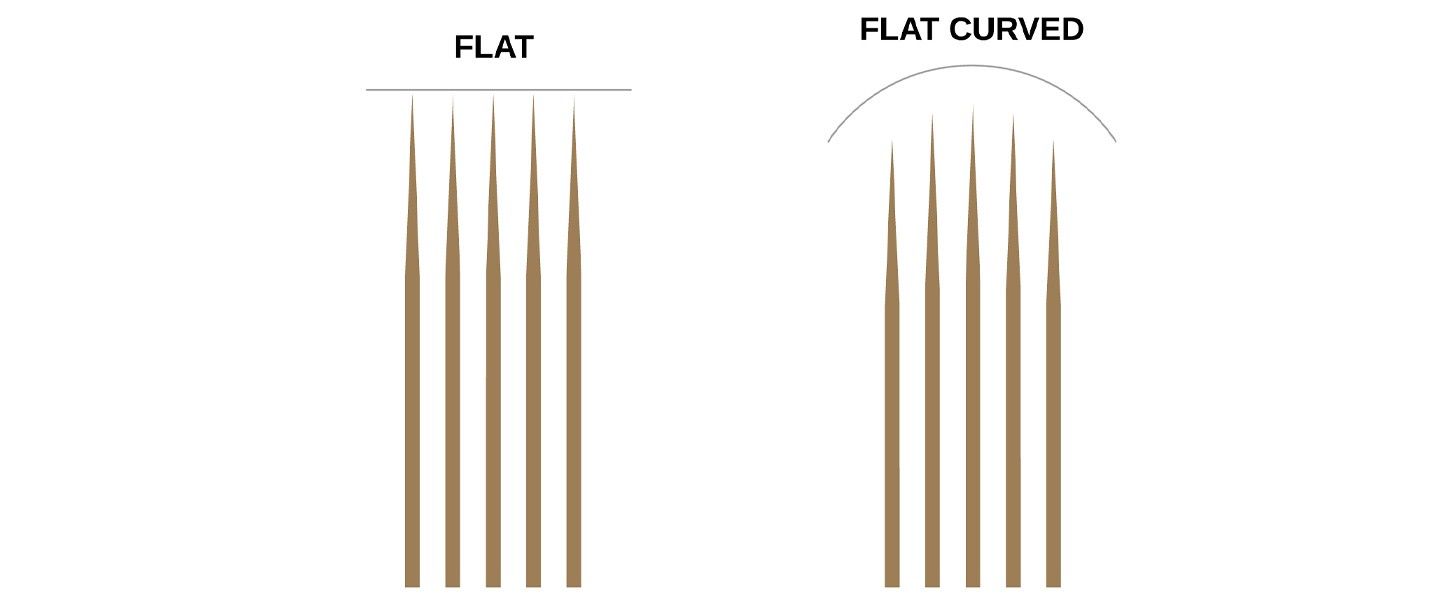
Not Sure Which Cartridges Is Best For You?
Try Our 25-Piece Sample Pack!
To help you find which ones suit your technique best, we’ve prepared a 25-Piece Sample Pack, so you can try each cartridge and see which ones you like. You get one of each, so test away and find your match for each treatment!
What’s the Difference Between PMU Cartridges & Traditional Tattoo Cartridges?
Although there are many similarities between PMU needle cartridges and traditional tattoo cartridges, one of the key differences is that PMU needles are thinner and as such, intended for use on facial skin. A smaller diameter allows for the extra precision and accuracy needed in permanent makeup. PMU procedures often require artists to create much finer details across smaller areas of the skin, compared to larger traditional tattoos.


